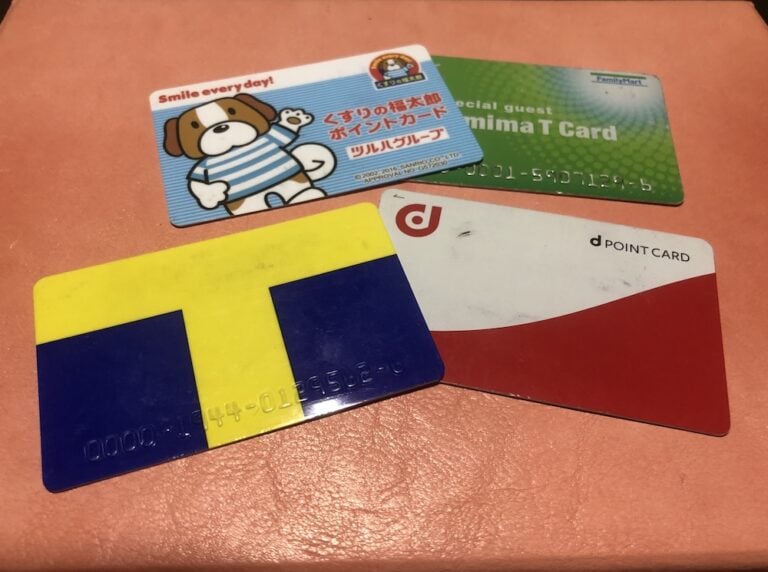
Point cards are a type of loyalty program commonly used by many stores and service providers in Japan. These cards ensure you get the most out of your purchases while accumulating rewards for your day-to-day needs. From groceries to restaurants to household products, understanding how to maximize these cards can significantly benefit you in the long run. Here are some strategies to help you get the most out of point cards in Japan.
Let’s explore their benefits and drawbacks in more detail.
Pros:
- Accumulate Points: Point cards entitle the holder to points every time they purchase goods or services, ranging from food to clothes to electronics. You accrue points for every yen you spend, which accumulate to offer you useful conveniences in the future.
- Discounts and Rewards: Another advantage is the ability to use the points you’ve gathered for discounts, special products, or even cash returns. This means you can save money on items you would have otherwise purchased.
- Free Memberships: Many point card services in Japan are free to join, allowing people to start collecting points immediately. This accessibility encourages consumers to sign up without any initial cost.
- Special Promotions: Card members often get early access to exclusive offers, seasonal promotions, gifts, and sales. These incentives make point cards more useful and contribute to boosting customer loyalty.
Cons:
- Limited Usability: Some points may be issued with specific terms and conditions, such as limited validity or restricted usage in selected stores. This can reduce the value of rewards if you rarely shop at those businesses.
- Accumulation Challenges: Earning points can sometimes be challenging. It may take a significant period to accumulate enough points, especially if your spending doesn’t align with bonus or promotion periods.
- Privacy Concerns: Using point cards means providing personal information such as your name, phone number, address, age, gender, occupation, and income level. Some consumers may be hesitant due to privacy concerns or potential misuse of their data.
- Card Management: Managing multiple point cards can be challenging, especially when tracking expiration dates, points, and program terms. Poor management could lead to missed opportunities to use points before they expire.
When getting point cards, do your research to decide which ones best suit your lifestyle. Familiarize yourself with each card’s conditions, make efficient use of points, and periodically check for new ways to maximize benefits in the long run.
Top Point Cards in Japan
- T-Point Card – Affiliated with the United T-Point Japan network, this card is accepted at popular stores like convenience stores, supermarkets, and electronics stores. Earn points for discounts or exchange them for chosen merchandise.
- Ponta Card – Accepted at Lawson, Tsutaya, and Bic Camera, points can be used for discounts or exchanged for products.
- Rakuten Point Card – Associated with the Rakuten Group, it earns points for purchases made at the online shopping site and other participating stores across Japan. Points can be converted into cashback or discounts on subsequent purchases.
- Aeon Card – Associated with the Aeon Group, this card provides points that can be used for spending at Aeon malls, supermarkets, and establishments that are affiliated with it. It’s great for shopping for groceries, household products, and more.
Tips To Maximize Your Point Card Benefits
To make the most out of point cards in Japan, start by registering for multiple cards based on your spending patterns. This allows you to earn points from various retailers and services, maximizing your opportunities for rewards. Understanding point redemption options is crucial; know the specifics of how, where, and to what extent each card can be redeemed. Research the value of your points and the best times to cash them in for rewards.
Connecting points with special offers can significantly boost your savings. Use your card during double or triple points promotions and take advantage of special discounts for cardholders. Additionally, most point card programs offer apps or online interfaces to monitor points, view personalized offers, and manage rewards effectively. Utilizing these tools can help you stay organized and ensure you get the most out of your point cards. To learn more about other point cards and their uses, click this link.
Effective Ways to Use Your Point Cards
Grocery Shopping
For example, at Aeon Group supermarkets or Ito-Yokado, every ¥100 spent translates to 1 point. After accumulating a significant number of points, you can use them to get discounts on groceries or household items.
Dining Out
Use your Ponta card at participating restaurants to earn points, which can later be redeemed for discounts or vouchers at affiliated outlets.
Online Shopping
Use your Rakuten Point Card when shopping online to receive points on purchases from Rakuten and affiliated stores. Points can be redeemed for cashback or discounts on future purchases.
Entertainment
Rent movies from Tsutaya, buy electronics from Bic Camera, and use your Ponta card to earn points for discounts on entertainment purchases or exchange them for other merchandise.
In summary, point cards in Japan are beneficial, easy to obtain, and attractive for enhancing shopping experiences while saving money. However, it is important to consider things such as how user-friendly they are, how easy or difficult it is to accumulate a useful amount of points, and privacy protection regarding your personal information when using these cards. Despite these challenges, point cards offer numerous benefits that can make them worthwhile.
By understanding the schemes, risks, and benefits of various point card programs, and using these insights to manage your spending more effectively in Japan, you can achieve great results, maximize the benefits provided by point cards, and simplify your shopping experience. Happy shopping!















